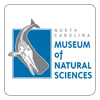This Community Enterprise for STEM Learning Math and Science Partnership, entitled Students Discover and led by North Carolina State University (NCSU), highlights citizen science through the collection and analysis of data by students for use by professional scientists. The project teams NCSU with core partners North Carolina Museum of Natural Sciences and three school districts: Alamance-Burlington School System, Pender County Schools and Wake County Public School System, to target improving Middle School STEM education through implementing hands-on "real-science" in the classroom. Typically, when students "do" science, they most often repeat experiments and projects that reveal known truths. A growing body of research in STEM learning has taken the tact that by involving the public in helping to discover the science deepens their understanding of the scientific concepts.
Project Contributions
Citizen Science in Schools: Students Collect Valuable Mammal Data for Science, Conservation, and Community Engagement
"Citizen science has been touted as an effective means to collect large-scale data while engaging the public. We demonstrate that children as young as 9 years old can collect valuable…
"Citizen science has been touted as an effective means to collect large-scale data while engaging the public. We demonstrate that children as young as 9 years old can collect valuable…
Bridging the Nature Gap: Can Citizen Science Reverse the Extinction of Experience?
"Opportunities for people to interact with nature have declined over the past century, as many now live in urban areas and spend much of their time indoors. Conservation attitudes and…
"Opportunities for people to interact with nature have declined over the past century, as many now live in urban areas and spend much of their time indoors. Conservation attitudes and…
What’s in Your School Yard? Using Citizen Science Wildlife Cameras to Conduct Authentic Scientific Investigations
"In this article, we describe an introductory science lesson in which students use motion-triggered wildlife cameras to study mammals on their school grounds or in their neighborhoods. This lesson provides…
"In this article, we describe an introductory science lesson in which students use motion-triggered wildlife cameras to study mammals on their school grounds or in their neighborhoods. This lesson provides…
Symbiosis in the Soil: Citizen Microbiology in Middle and High School Classrooms
"Microorganisms are vital to environmental health, yet their association with disease often overshadows these benefits. Building citizen-science activities around the positive role of microorganisms and an understanding of their ubiquity…
"Microorganisms are vital to environmental health, yet their association with disease often overshadows these benefits. Building citizen-science activities around the positive role of microorganisms and an understanding of their ubiquity…
The Tragedy of the Unexamined Cat: Why K–12 and University Education Are Still in the Dark Ages and How Citizen Science Allows for a Renaissance
"At the end of the dark ages, anatomy was taught as though everything that could be known was known. Scholars learned about what had been discovered rather than how to…
"At the end of the dark ages, anatomy was taught as though everything that could be known was known. Scholars learned about what had been discovered rather than how to…








